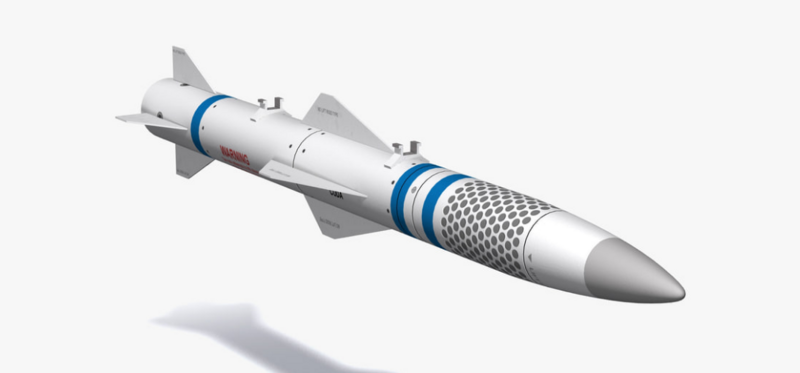Pahoittelut tekstiseinästä (kopsattu sellaisenaan F16.netistä), mutta uskon teidän muidenkin olevan kiinnostuneita tästä. Kiinalaisten näkemyksiä hankkimistaan uusista sukhoista:
https://mil.sina.cn/sd/2018-12-09/detai ... c7DTwlb24g
Google translate link
https://translate.googleusercontent.com ... yyHuHz5zFw
- The SU-35 serves as an excellent benchmark for the Chinese military to gauge the effectiveness of their own development vs international standards.
- Su-35 is very maneuverable, possibly the most maneuverable fighter in the PLAAF
- The N035E is an excellent PESA radar. It's pretty much the best PESA radar you can practically develop.
- However, it's substantially weaker than the current generation of Chinese AESAs.
- The N035E radar has some interesting features, for example it is capable of detecting a target at extended ranges (350km) if it's only required to scan a small area (about the size of the HUD). This is not particularly useful without AWACs cueing.
- ESM/ECM systems are not as good as the J-16s. If the J16 were to be rated a 10/10, the Su-35 would be an 8.5/10 on ESM and 8/10 on ECM performance.
- The IRST is also worse, due to the state of the Russian electronics/optics industry.
- The R-77 and R-73 can be used on China's older stock of Russian fighters (Su-27/Su-30MKKs).
- R-77/R-73 are unremarkable, and performance trails the Chinese PL-10 and PL-15 missiles. (Wouldn't the PL-8 and PL-12 be a better comparison?)
- The Su-35 has an interesting feature, the "БОСЭС" or "Duel" which, if programmed with the capability of the opposing fighter, can automatically track the enemy in real time and recommend optimized decisions. It presents a good look into the Russian understanding of air combat modeling - and China may seek to do something similar for their 5th generation fights. (Coupled with advances in Chinese AI technology).
- The 117S engine is very good. It has 13% more dry thrust than the older AL-31F, which is already superior to the domestic WS-10.
- The Su-35s have some form of datalink capability, and have some level of integration into Chinese air defense networks.
- The Su-35 is giving China lots of experience with a super maneuverable thrust vectoring aircraft, and is influencing Chinese decisions on where to go with fighter development.
- They've learned quite a bit via dissimilar air combat training exercises with the Su-35.
- "the 117S engine is also the key subsystem for the first time after the introduction of the Su-35" - I think this means that the engine is the primary reason the Su-35 was bought.
- The officer's dream heavy 4.5th generation fighter would be a J-16 with 117S engines.
- The N035E's look-up range is only slightly more than the J-16 radar's look-down range, and the former is not as effective as the latter in anti-surface mode
- The '8.5' and '8.0' scores refer to the Su-35's sensing and EW capabilities respectively assuming the J-16's are set at '10' for both
- The weapons package of the Su-35 is not particularly impressive
- The KS-172, even if imported, wouldn't compare favourably with China's own VLRAAM
- Strike munitions of the Su-35 deal are upgraded versions of the same munitions procured as part of the Su-30 deals almost twenty years ago and there is limited value in what can learnt from them
- A lot of the flaws on the PLA Su-35s cannot be attributed to Russian reluctance to export top technology but rather the Russians haven't encountered the issues on their own Su-35s
- This mirrors the situation of the early-2000s when PLA Su-30s were flown at a much higher intensity than their cash-strapped Russian counterparts in preparation for a Taiwan contingency, leading to the PLA giving the aircraft OEM much more information on the Su-30's flaws than Russian pilots who didn't get the chance to fly their aircraft as much nor in as diverse of scenarios
- The Su-35 has the S-108 datalink which allows up to sixteen aircraft to share fire-control data allowing one aircraft to guide the missiles fired by other aircraft similar to CEC
- The datalink capability was already available for the Su-30 but owing to the relatively weak performance of the N001VE radar, the capability wasn't very useful and the PLA declined to include it
- Real-war experience in Syria suggests the S-108's ECCM capability can be further explored (might've gotten jammed by Americans/Israelis?)
- The extraordinary manoeuvrability and the corresponding combat potential of the Su-35 can largely be attributed to the 117S engines; thus, mastery of 117S utilisation was priority no. 1 for the 6th Brigade to achieve combat-capability ASAP
- Upgrading Su-35s to use domestic systems is more difficult than upgrading Su-27s and Su-30s due to the former's integrated system architecture compared to the latter two's distributed system architecture -- changing one system on the Su-35 has ramifications for every other system
- Extensive Russian assistance is necessary to conduct upgrades of systems without screwing everything up, hence the Su-35 deal is called "Sino-Russo Su-35 Cooperation Project" -- it's not just a simple export-import deal
Aircraft no. 61271 began test flights at Zhukovsky Airfield after handover to the PLA, suggesting those were post-upgrade system integration tests
Su-35s are already compatible with Chinese AEW




